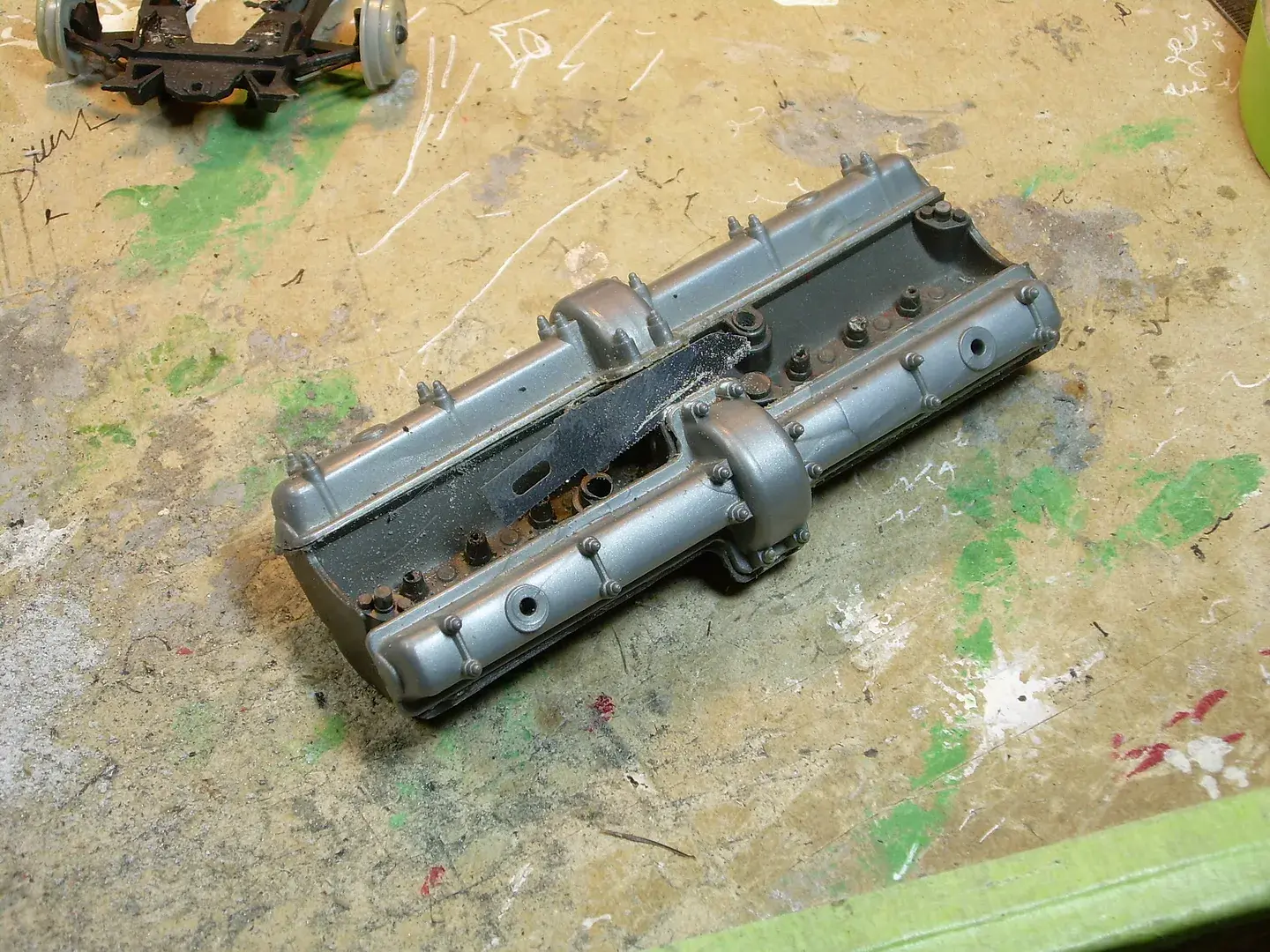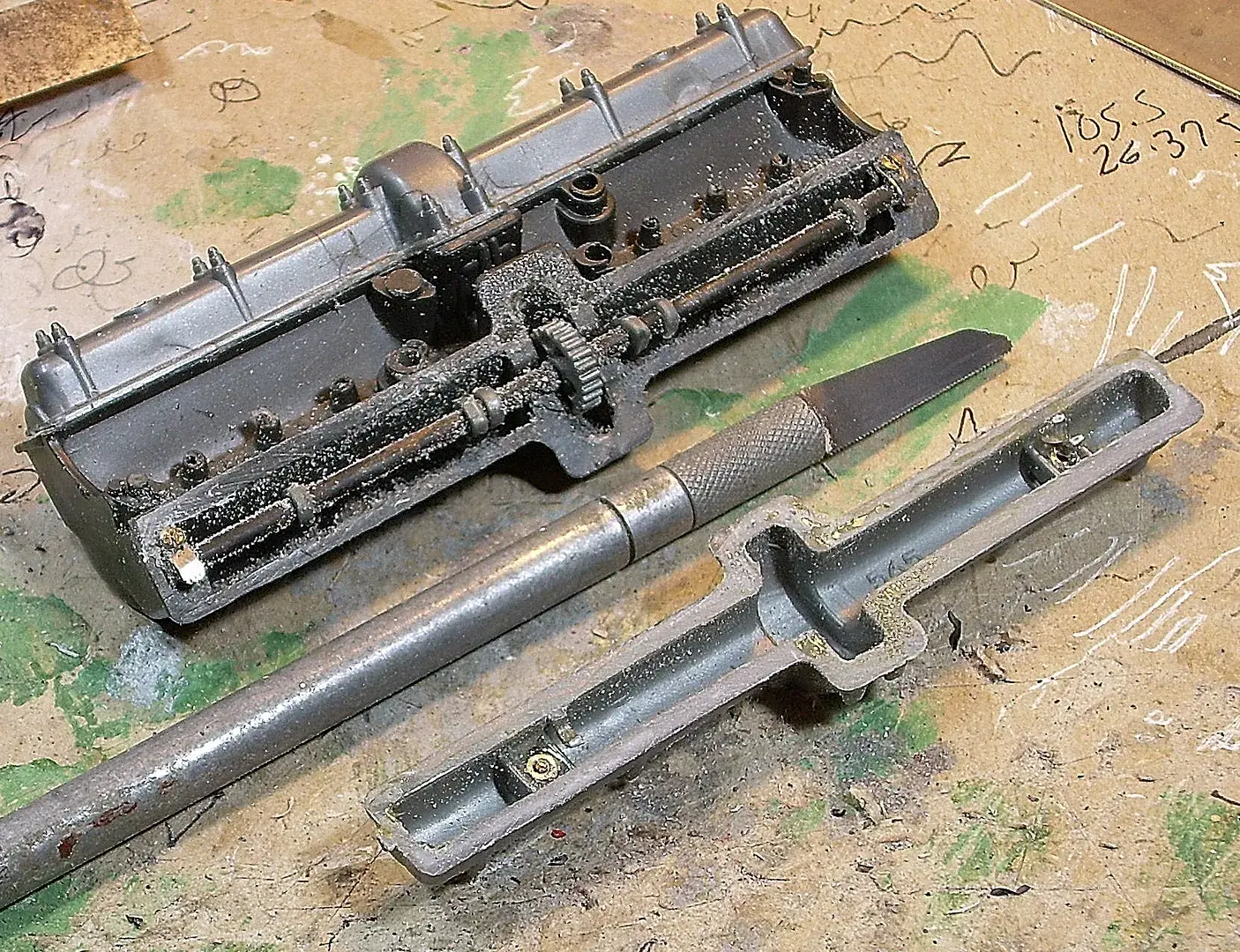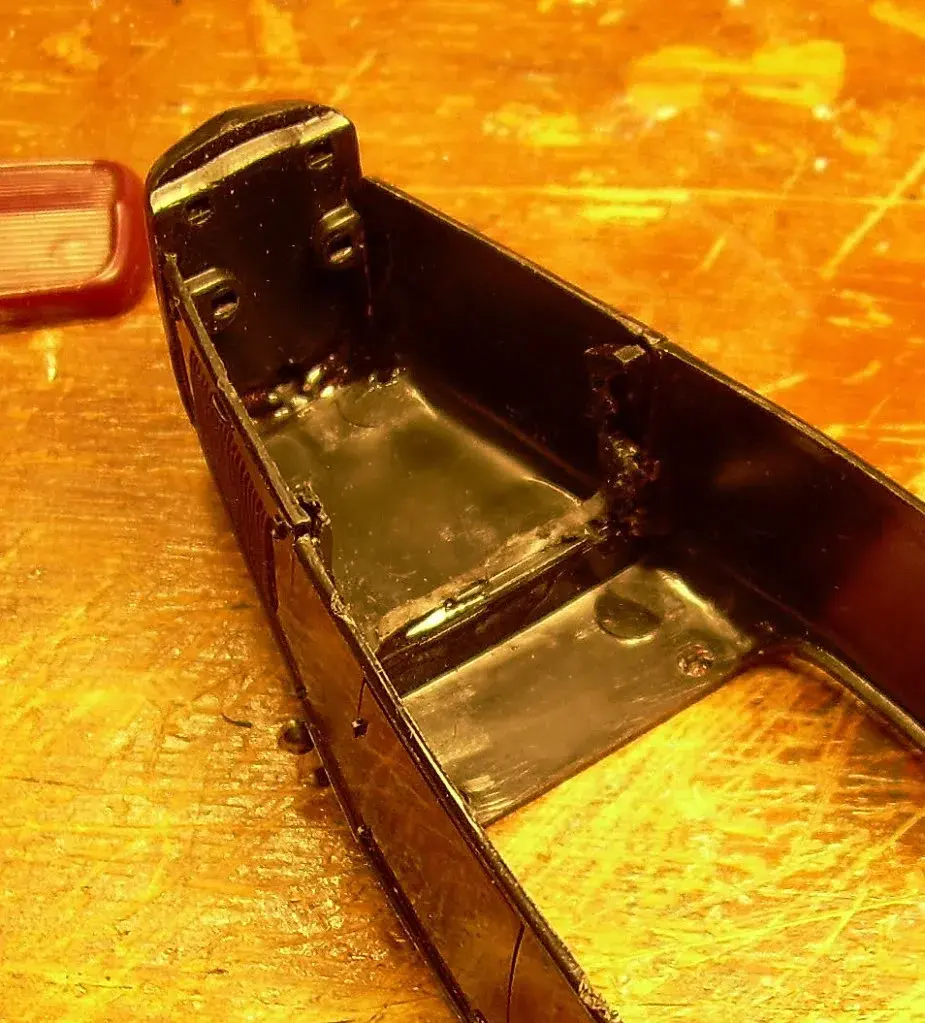-
Posts
39,321 -
Joined
-
Last visited
Content Type
Profiles
Forums
Events
Gallery
Everything posted by Ace-Garageguy
-
6 hours so far today blown to hell trying to get through to my cell provider, as they're shutting down the 3G dinosaur network. They promised me a free phone "to keep me as a customer" if I called them on (insert number here). Multiple dropped calls, no callbacks, when the callbacks come in I get a message "you have reached a non-working number. Thank you for calling (insert provider here)". Also locked up web pages, "we can't process at this time. Call (insert number here), and then that number goes through the same rigmarole as above. Boy oh boy. Sure are lotsa little techies doing a great job today. But you know...why would anyone only want a phone that just makes phone calls anyway?
-
This side of the country close...Tail of the Dragon, US 129 at Deal's Gap (though these days, it can get pretty crowded...which of course ruins the whole experience). https://tailofthedragon.com/ This side of the country farther away... Outer Banks National Scenic Byway, NC 12. https://www.visitnc.com/listing/Nfii/outer-banks-national-scenic-byway EDIT: For the nav-app-dependent, the scary looking things below are called "maps".
-
Oh yeah...best rod I've seen in a long time. Proportions are right. Stance is right. Parts choices are right. Even the angle the engine is installed at is right. Nice. EDIT: Oops...one minor caveat. The port spacing on the headers is only correct for a Buick "nailhead" engine. The Chrysler that's in there would have evenly spaced exhaust ports / primary pipes. This build is SO good, that seemingly little thing kinda jumps out. And I'll gladly send you the right headers if you don't have 'em. EDIT 2: Actually, the port spacing on the intake manifold would be even on a Chrysler too. Not quite as noticeable though. One more thing...I'm NOT criticizing your build. Overall it's as close to perfect design-wise as it gets.
-
The "blame" goes to whatever sorry slacker doesn't do his job to the best of his ability. Don't try to make out that looking at a shaft to see if it's splined or not has anything to do with "cost cutting"...unless you hire an actual monkey that doesn't know what a "spline" is to do the job. And NOBODY ever had to hold a gun to MY head to make me do a job right; I quit places where the management couldn't tell quality from a hole in the ground. The responsibility for crapp work lies with the person who does the crapp work. Period. EDIT: I'm fully aware that blaming the system, or society, or corporations, or history, or Western Civilization, or whatever the excuse-du-jour is has become the common mantra now for every failing, real or imagined. And it's bull. There's a little thing called "taking personal responsibility" that trumps every excuse in the book.
-
It's an easy fix anyway. Just bore out the mating part, and stick 'em together with JB Weld.
-
Exactly...which is pretty much the inspiration for "if you're not angry, you're not paying attention". Unfortunately for civilization, there are serious flaws in human nature. Laziness (the desire to do the absolute minimum for the maximum return), and the grasping for power among those who can't really DO anything, are becoming more and more prevalent as other aspects of "civilization" devolve. But there are indeed bright spots among all the doom-and-gloom, and every time I encounter a well designed, well made anything, or someone who's skilled in his work because it matters to HIM to do a good job, it makes my day.
-
Injection molding dies are typically pinned or otherwise positively indexed to each other, theoretically making repeatable precise alignment between the die cavities. However...if an indexing pin (or whatever indexing means is employed) wears or falls out of an old tool, and the QC wizard whose job it is to pay attention to things like that happens to be texting or looking at panda videos instead, you get what you get. I understand there's a pretty horrible misalignment on the nose of some of the Foose Ford pickup cabs, by the way. EDIT: see below (photo by Nacho Z in his Foose Ford FD-100 in Splash Paint thread)
-
Quality control is job one, they said. Sure we can read blueprints, they said. Splines? We don't need no stinkin' splines. (See, it's really really hard counting all those machining operations, and then looking at the part to see if they're all done.) This is my life, every single working day: wiping idiots' backsides. EDIT: Just today, I had a throttle position sensor for a whooptee electronic trans kickdown, from a "name" manufacturer, come in with a plug on the supplied pigtail incompatible with the supposedly mating socket on the sensor. Morons, every day, every week, every month, can't do the simplest things right.
-

Container Ship Adrift in Atlantic with...
Ace-Garageguy replied to TransAmMike's topic in The Off-Topic Lounge
Well, that's what I get for posting before I actually know what I'm talking about. -

Container Ship Adrift in Atlantic with...
Ace-Garageguy replied to TransAmMike's topic in The Off-Topic Lounge
Ummm...never? This is the only one even remotely close, and it's entirely different. https://nypost.com/2018/12/21/ford-recalling-874000-trucks-over-spontaneous-combustion-fears/ -
Anybody want a bunch of parts? I just found a pile of old machines somebody dumped next to our scrap-metal container.
-

Is this engine from a car
Ace-Garageguy replied to DougS's topic in Model Building Questions and Answers
It's the old Revell parts-pack turbine. -

1/16 Scale Gasser Front End
Ace-Garageguy replied to Randy Bo Bandy's topic in Model Building Questions and Answers
You're welcome sir. -
Plastic parts glooed together heavily with solvent-type gloo won't respond to any chemical treatment or soaking whatsoever. The reason is that the solvent literally melts and "welds" the parts together. SOMETIMES wetting and freezing assemblies will help to break the bonds, as water getting in the seams will expand as it freezes, possibly enough to force the seam to split. HOWEVER, very often mechanical means like prying, sawing, wedging, or grinding will be necessary to separate parts. BUT...when doing this, it's often necessary to sacrifice one part to save the one stuck to it. Judgement is key. Photo below illustrates using an X-Acto chisel tip blade as a wedge to gently force a seam to split. Next photos illustrate a photoetched saw blade used to separate a heavily glooed seam. Last shots show a Dremel being used to grind out heavy gloo between two parts.
-
Today I was irked by sock puppets, trained seals, bobble-head dolls, blowhards, and the generally gutless.
-

1/16 Scale Gasser Front End
Ace-Garageguy replied to Randy Bo Bandy's topic in Model Building Questions and Answers
Starting on page 3 of the thread below, you can see the steps involved. -
And that's it pretty much it in a nutshell. Anti-lock brakes on street-driven vehicles are most useful when the driver is less than highly-skilled...the vast majority...who might be saved in a panic-stop situation by an anti-lock system. BUT...highly-skilled drivers very often see the intrusiveness of anti-locks as a detriment to fine car control. Many skilled drivers can USE the ability to lock up their brakes at will as another tool in a driver's box of tricks. AND...depending on the specific performance characteristics of an anti-lock system, such a system can, in fact, interfere with fine pedal-pressure-modulation inputs from the driver, or inhibit his ability to approach lockup when entering a turn (to settle the car on its suspension, or to help initiate a drift, and then gradually lessening pressure to keep the car drifting at his intended angle). In general though, there is no perceptible difference between operating a vehicle with anti-locks and without anti-locks within normal parameters. They do nothing different until a panic-stop situation arises, and anyone thinking otherwise doesn't understand their function. EDIT: Finally, I agree anti-lock brakes are a good safety feature for MOST of the drivers on the roads, but a driver's stupid over-reliance on them to save him from his own ineptitude or poor decision-making can be dangerous as well. I've seen multiple "accidents" caused by operating vehicles way too fast for conditions, where the driver thought he was not subject to the laws of physics because he had anti-lock brakes, traction-control, etc.
-

What did you see on the road today?
Ace-Garageguy replied to Harry P.'s topic in General Automotive Talk (Trucks and Cars)
That photo was pulled from a Google image search of the term "Revell Porsche 914", which led directly to a thread on this very forum. I didn't think re-posting a photo of a model already posted on this forum, for an example of a kit being discussed on this forum, would be out of line. Knowing you to be a skilled builder, as do many members here, it seemed to me an excellent illustration that the flaws of proportion and line apparent in the model were very obviously NOT artifacts introduced by a builder, but were errors committed by the kit maker. My reposting of the photo doesn't even violate the spirit of the definition of "fair use" under US copyright law, below. "Fair use permits a party to use a copyrighted work without the copyright owner’s permission for purposes such as criticism, comment, news reporting, teaching, scholarship, or research." EDIT: What I personally find to be backside-chapping is when photos of my own work are reposted with no context, particularly where there is a clear implication that the work was done by someone else. -

ANY CHANCE WE CAN GET THESE TWO TOPICS PINNED?
Ace-Garageguy replied to Ace-Garageguy's topic in Tips, Tricks, and Tutorials
Maybe a better one from my perspective would be to just stop bothering to answer questions. -

ANY CHANCE WE CAN GET THESE TWO TOPICS PINNED?
Ace-Garageguy replied to Ace-Garageguy's topic in Tips, Tricks, and Tutorials
I didn't ask that they be combined. I asked they they be pinned. Last time I checked, those two words had entirely different meanings, but in today's rapidly devolving lexical environment it's hard to be certain. Many of the existing pinned threads are about advanced techniques...door and hood hinges, stripping chrome, scribing and highlighting panel lines...that have wide appeal to builders wanting to go farther than the average. Questions about replacement "glass" come up frequently, and as these two threads have different material, but together pretty well contain everything anyone needs to know about MAKING replacement "glass", pinning them...NOT COMBINING...would save considerable time for those of us who repeatedly seek them out to refer the search-challenged to. -

Non warped acetate kits
Ace-Garageguy replied to ZTony8's topic in Model Building Questions and Answers
More than anything, specific storage conditions of temperature and humidity influence the deterioration of acetate models. I have an early acetate Midget from Monogram that's almost perfect, and another one that's badly warped and shrunk. I acquired them at different times, from different sellers, but they were made at the same time, though were stored differently. The closest thing I've found so far as to the actual "science" regarding the deterioration of models is a site looking at factors contributing to the deterioration of acetate film stock. https://s3.cad.rit.edu/ipi-assets/publications/acetate_guide.pdf -
Revell Jag XK SS. Second one, this time as a donor to do a full detail D-type from the nicely proportioned ancient Lindberg kit. Probably overpaid, as I understand it's going to be re-released in September or so, but instant-gratification, you know? And a Fujimi Ferrari 365 Daytona Spyder. Pretty good deal on this one. One more...a Monogram '59 Chebby convertible. I've had a hardtop body shell with no guts, so this will take care of that. WAY under market price, too.
- 39,158 replies
-
- 2
-

-
- johan
- glue bombs
-
(and 1 more)
Tagged with:







